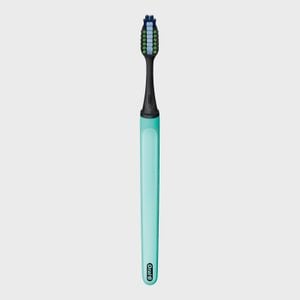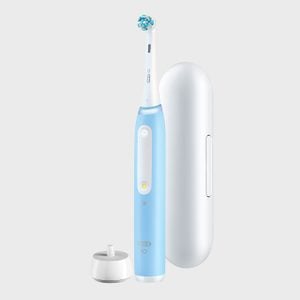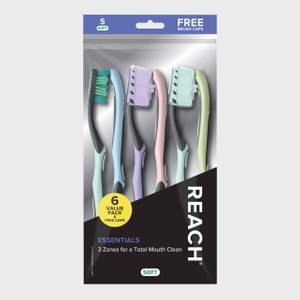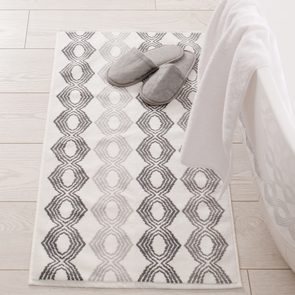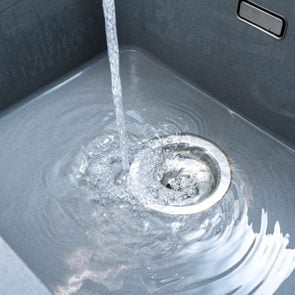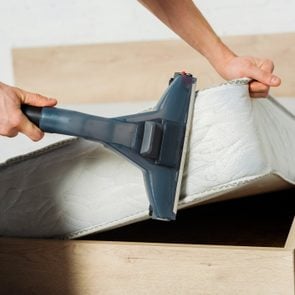Because cleaning your teeth and gums isn't as effective with worn bristles, it's time to learn how often you should change your toothbrush

This Is How Often You Should Be Changing Your Toothbrush

A toothbrush is your best weapon against plaque and the bacteria that can cause cavities. But this everyday oral-health tool is also one of the most common places germs hide in the home. And while it doesn’t have the most germs in the bathroom, it’s right up there. To have healthy teeth and gums, it’s not only critical that you clean your toothbrush but also that you understand a toothbrush’s lifespan. So, how often should you change your toothbrush?
To find out, we asked Roopali Kulkarni, DMD, MPH, assistant professor of oral medicine at the University of Pennsylvania School of Dental Medicine, for her best advice. Read on to learn how often you should change your toothbrush, then make sure it stays fresh. That means doing more than simply learning how to clean it properly—you have to put that knowledge into practice! Add sanitizing and replacing your toothbrush to your cleaning schedule, and you’ll be flashing those pearly whites in a satisfied smile.
Get Reader’s Digest’s Read Up newsletter for more cleaning, humor, travel, tech and fun facts all week long.
What happens if you don’t change your toothbrush regularly?
Just as you swap out kitchen sponges and mop heads when they start to look a bit grubby, you should replace your toothbrush when it’s looking a little worse for wear. “Our toothbrushes serve to keep our teeth and mouth clean, and over time, they can begin to harbor bacteria, or their bristles can become worn or damaged,” says Dr. Kulkarni.
Damaged or worn bristles can cause irritation to the gums while brushing, she says. And the worn bristles can become less effective at cleaning your teeth, which somewhat defeats the purpose of this essential twice-a-day oral-hygiene ritual.
The issue with a worn-out toothbrush isn’t that it harbors more bacteria than a newer one. It’s that it’s less effective at getting your mouth clean. Besides, toothbrush bacteria may be more of a gross-out issue than one of poor oral health: “Although toothbrushes can begin to harbor bacteria, they are not known to increase risk of gum disease,” Dr. Kulkarni says. “However, worn or damaged bristles can be rough on the gums.”
How often should a toothbrush be replaced?
The American Dental Association recommends that toothbrushes be replaced every three to four months. You may need to swap it out more often than that if the bristles are visibly matted or frayed, and it’s OK if you want to get a new one each month.
How often should you change your toothbrush if it’s an electric or sonic model? As it turns out, the three- to four-month guideline goes for more than just manual brushes—it’s the same for all types of toothbrushes.
One thing that can disrupt that replacement timeline? A recent illness like a cold or the flu. Experts agree that when you’ve been sick, germs can linger on your toothbrush, increasing your risk of reinfection.
If you don’t like tossing something you haven’t had for very long, put your used toothbrush to work. There are plenty of things you can clean with a toothbrush, from grimy grout to shower heads. But don’t give your sick-day toothbrush a second life—that one goes straight into the recycling bin.
What are some signs it’s time to replace your toothbrush?
Replacing your toothbrush doesn’t need to be at the top of your daily cleaning checklist, but it shouldn’t be a task you think about only a few times a year. Remember, the recommendation to replace it every three to four months is only a guideline, and you’ll need to watch for signs of wear.
Pay attention to how your toothbrush looks the next time you put it back into the holder. Spot any of the signs below? If so, your toothbrush is near or past the end of its lifespan, and it’s time to grab a new one.
- Worn bristles.
- Frayed bristles.
- Discolored bristles.
- The bristles no longer stand upright.
- The color indicator on your toothbrush, which is designed to tell you how long it’s been used, is fading.
- There’s a lingering odor.
- Your teeth don’t feel clean when you’re done brushing.
- You don’t remember the last time you replaced it.
Find a replacement toothbrush
By now, you’re well aware of the answer to “How often should you change your toothbrush?” On to the next question: What should you look for in a replacement? “Choose a soft-bristled brush,” says Dr. Kulkarni. “Firm or even medium-strength bristles may cause damage to your gums and enamel. So when brushing your teeth, don’t scrub vigorously—only brush hard enough to clean the film off your teeth. Your fluoride toothpaste will do the rest of the work.”
From there, pick the type of toothbrush that best suits your needs. Dr. Kulkarni says electric toothbrushes are known to remove plaque buildup well, but sometimes, a manual toothbrush is still the way to go. (If you’re cramming toiletries into a jam-packed suitcase, a manual toothbrush can save space.)
“Both types of toothbrush can effectively and thoroughly clean your teeth; it all depends on which one you prefer,” she says. “People who find it difficult to use a manual toothbrush [if mobility is a challenge, for instance] may find a powered toothbrush more comfortable.” Talk to your dentist about which kind is best for you.
With replacement toothbrushes in hand, it’s time to turn your attention to other cleaning tips. Now might be a good time to tidy up your entire bathroom, from the shower and bathtub to the shower curtain and those seemingly impossible-to-clean glass shower doors.
Sources:
- Roopali Kulkarni, DMD, MPH, assistant professor of oral medicine at the University of Pennsylvania School of Dental Medicine
- American Dental Association: “Toothbrushes”





















